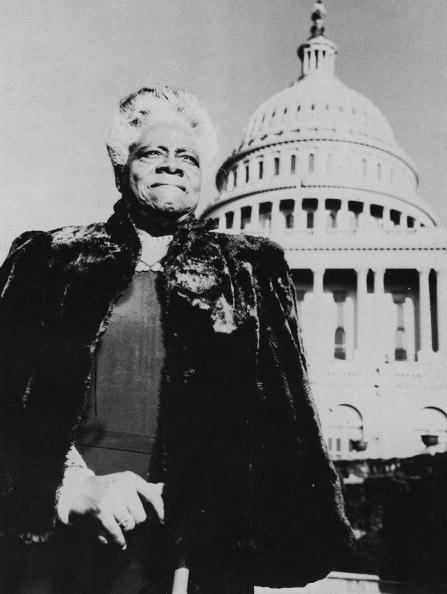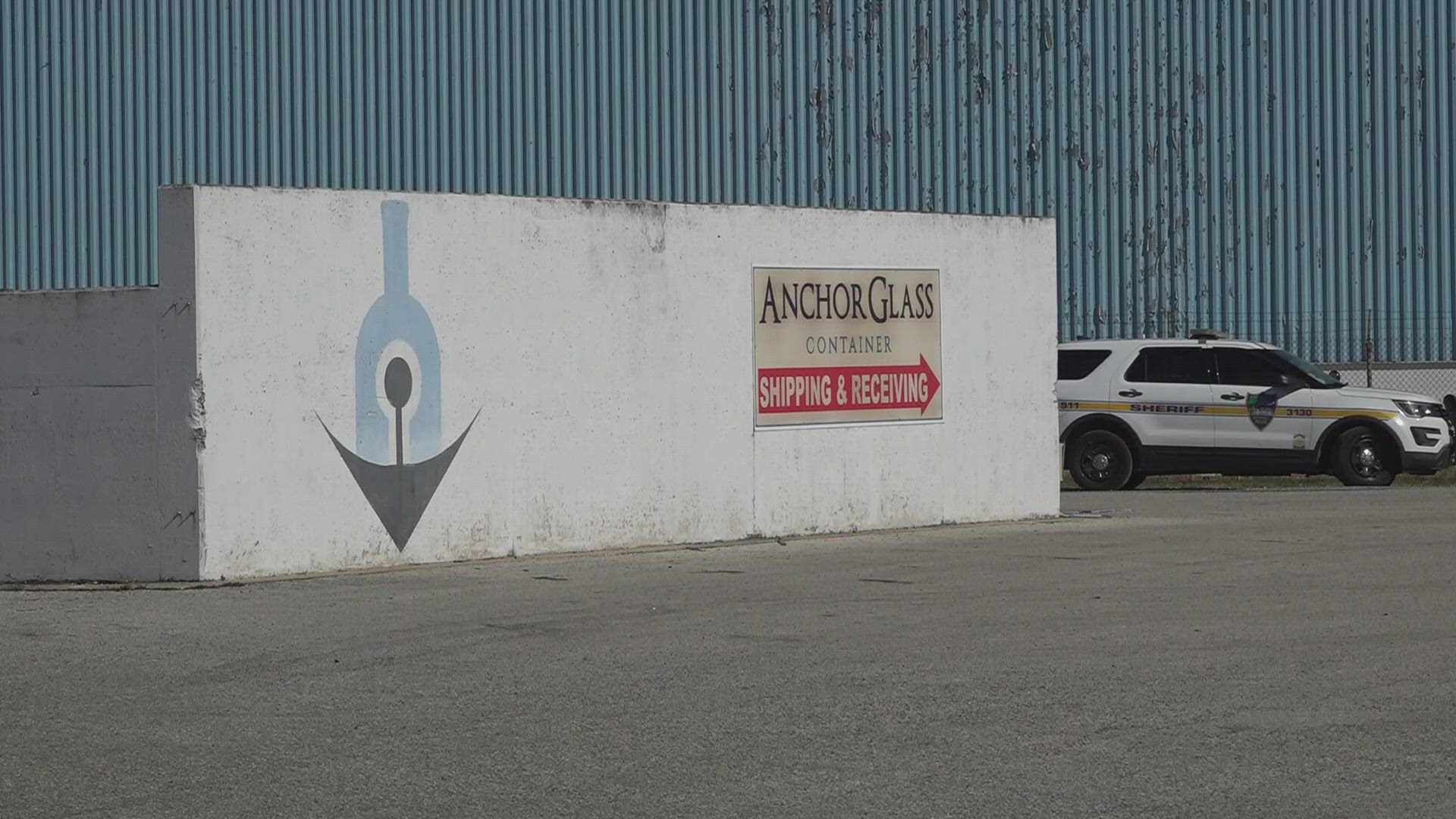Augusta Savage - 1892-1962
Augusta Savage was born on Feb. 29, 1892, in Green Cove Springs. Savage moved to Jacksonville in search of work as a sculptor, but was unsuccessful. In 1921, she moved to New York's Harlem community where she established herself as an artist and a teacher. Her sculpture, The Harp, was influenced by Negro spirituals and hymns, most notably James Weldon Johnson's "Lift Ev'ry Voice and Sing." For Gamin, a sculpture of her nephew, she won the Julius Rosenwald Fellowship in 1929 and the opportunity to study in Paris for one year. Upon returning from Europe, Savage established the Savage Studio of Arts and Crafts in Harlem in 1932. In 1937, she became the first director of the Harlem Community Arts Center, an institution where African Americans could learn about their culture through the study of fine arts. After 1945, Savage fell into seclusion. Jacksonville's Cummer Museum of Art and Gardens has a rare bronze Savage sculpture, The Diving Boy, on permanent display
A. Phillip Randolph - 1889-1979
Born in Crescent City, Randolph was one of the nation's foremost spokesmen for black labor. In 1925, he organized and served as the first president of the all-black International Brotherhood of Sleeping Car Porters. He organized two major marches in Washington, D.C., in 1941 and 1963, which resulted in important advances in black civil rights. He helped found the Negro American Labor Council and was a vice president of the executive committee of the American Federation of Labor (AFL) and Congress of Industrial Organizations (CIO). Randolph received the Presidential Medal of Freedom from President Johnson in 1964.
Daniel "Chappie" James, Jr. - 1920-1978
A Pensacola native, "Chappie" James became the first black four-star general in American military history in 1976. His illustrious career included 101 combat missions as a fighter pilot in Korea and 78 more in Vietnam. He was decorated for valor and air tactics. As commanding officer of the U.S. Air Force base in Libya, and wearing a .45-caliber automatic stuffed under his belt, he confronted the new dictator, Moammar Khadafy, at the front gate and forced his withdrawal. Khadafy had intended to seize the base with his half-tracks. In the late 1970s, the General was sought out as a potential candidate for lieutenant governor of Florida but died of a heart attack a few weeks after his retirement.
Harry Tyson Moore - 1906-1951
A native of Suwannee County, Harry T. Moore was president of the Brevard County Branch of the NAACP and later president and state coordinator of the Florida Conference of the NAACP. For 17 years, Moore traveled through Florida, building NAACP branches, investigating lynchings, protesting acts of police brutality and organizing voter registration campaigns. On Christmas night 1951, a bomb planted under Moore's small, six-room cottage in Mims killed Moore and his wife Harriette. In August 2006, then Attorney General Charlie Crist released the results of a 20-month investigation into the murder of Harry and Harriette Moore. The fatal bombing of the couple's home – on their 25th wedding anniversary – was never solved. The investigation pointed to extensive circumstantial evidence that the Moores were victims of a conspiracy by exceedingly violent members of the Ku Klux Klan. Moore was designated a Great Floridian in 2007.
James Weldon Johnson - 1871-1938
James Weldon Johnson, a native of Jacksonville and founder of the Harlem Renaissance, became a leading poet in the 1920s. He was the first black to pass the bar examination in the state of Florida. During President Woodrow Wilson's administration, he served as consul to Nicaragua and Venezuela. In 1916, he became the first executive secretary to the National Association for the Advancement of Colored People (NAACP).
Johnson is best remembered for his poem, 'Lift Ev'ry Voice and Sing,' known as the Black National Anthem, which was set to music by his brother John Rosamond Johnson.
John Rosamond Johnson -1873-1954
John Rosamond Johnson was a music virtuoso who composed the music to 'Lift Ev'ry Voice and Sing' and more than 150 spirituals. After moving to New York City, Johnson wrote more than 160 songs and shows alone and as partner of the Cole and Johnson musical team. He conducted Oscar Hammerstein Opera House in London, and was in the original cast of Porgy and Bess.
Josiah T. Walls - 1842-1905
Born a slave in Winchester, Va., little is known of Josiah T. Walls' early life. Enlisted in the Third Regiment, U.S. Colored Troops in 1863, Walls was transferred in 1864 to Picolata. He married Helen Ferguson of Newnansville and in 1865 moved to Alachua County.
After passage of the U.S. Military Reconstruction Act of 1867, Walls entered into Florida politics. He was a delegate to the 1868 state constitutional convention and later was elected state representative and senator from Alachua County. Walls became the state's first black congressman in 1870. Unseated by the House near the end of his term, Walls was re-elected in 1872. In 1874, Walls defeated J.J. Finley, a former Confederate general, but in 1876 he again was removed from office. Walls was elected to the Florida Senate that year.
In 1873, he purchased a 1,175-acre plantation in Paynes Prairie, acquired the weekly newspaper, The New Era, and was admitted to the Florida Bar. He remained active in local politics and was a successful farmer through the 1880s. He suffered financial ruin in the 1894-95 freeze. Walls moved to Tallahassee, becoming the farm director at the school that is now Florida A & M University. He died in Tallahassee in 1905.
Mary McLeod Bethune - 1875-1955
The daughter of former slaves, Mary McLeod Bethune rose to become a noted black educator and adviser to presidents from Coolidge to Truman. In 1904, she established the Daytona Educational and Industrial Training School for Negro Girls with $1.50 and sheer determination.
"We burned logs and used charred splinters as pencils and mashed elderberries for ink," she wrote.
In 1923, she oversaw the school's merger with the all male Cookman Institute in Jacksonville, created the Bethune-Cookman Institute, now known as Bethune-Cookman University. Bethune remained president of the school for more than 40 years.
In 1924, Bethune became president of the National Association of Colored Women, at that time the highest national office a black woman could attain. And in 1935, she formed the National Council of Negro Women to take on the major national issues affecting blacks. Bethune served as President Franklin Roosevelt's director of the National Youth Administration's Division of Negro Affairs (1936), becoming the first black woman to serve as head of a federal agency, and later was a consultant to the founding conference of the United Nations.
MaVynee Betsch
1935-2005
MaVynee Betsch (Marvyne Elisabeth Betsch), known as "The Beach Lady," was born on Jan. 13, 1935, in Jacksonville. The Beach Lady, with her seven-foot dreadlocks and her love of the heritage left by her great-grandmother, was the official historian and matriarch of American Beach and an important character in American Beach: A Saga of Race, Wealth and Memory by Russ Rymer.
Founded by her millionaire great-grandfather, A.L. Lewis, American Beach on Amelia Island was the African-American Hyannisport. The créme de la créme of black society came here to relax in the Jim Crow South. MaVynee was raised in the lap of luxury, but she gave away her fortune to environmental causes. She earned a double degree in voice and piano from the Oberlin Conservatory and sang opera in Europe. In 1962, Betsch returned to Jacksonville and began to both study and promote conservation and protection of the environment, focusing on her beloved beach and the American Beach community.
She was featured on CBS, PBS and NPR, and in such publications as USA Today, the New York Times and Smithsonian. She was a member of more than 60 charitable organizations. MaVynee gave visitors to American Beach the unique privilege of experiencing a guided walking tour through the eyes of a woman who grew up on the beach during its heyday. Betsch died on Sept. 5, 2005. She was 70, the same age as her beloved American Beach.
Virgil Hawkins
1906-1988
A monument honors Virgil Darnell Hawkins in Okahumpka, next to the Post Office, near the intersection of state roads 33 and 48. The monument is about a mile from his gravesite, and a few blocks from the home where Virgil was born and spent his childhood.
Hawkins made many personal sacrifices in order to desegregate Florida's universities and allow African Americans to pursue a law degree. In 1946, Hawkins was denied entrance into the University of Florida Law School. He sued the state, which promptly opened a law school at Florida A&M University as a legal defense. Hawkins refused to enter FAMU. He said that by opening a law school at historically black FAMU, the state was maintaining discrimination.
After nine years, the state agreed to desegregate UF's law school if Hawkins withdrew his request for admission. He agreed. Hawkins completed his legal education in Massachusetts, but that school was unaccredited. After graduation, he asked to take the Florida bar exam and be admitted to the state Bar. He was denied.
At age 70, after much litigation, the Florida Supreme Court agreed to admit Virgil Hawkins to the Florida Bar as a means of "righting a wrong." The Virgil Hawkins Library at the University of Florida law school is a tribute to his sacrifices.
Zora Neale Hurston
1891-1960
Zora Neale Hurston is likely the most significant collector and interpreter of Southern African-American culture. Since the 1970s, she has enjoyed a revival of interest due in large part to disciples such as Alice Walker, Pulitzer Prize-winning author of The Color Purple; Robert Hemenway, author of Zora Neale Hurston, A Literary Biography; and Valerie Boyd, author of Wrapped in Rainbows. Awareness of her work was further enhanced by Oprah Winfrey, who produced a television version of her book, Their Eyes Were Watching God, starring Halle Berry.
"I think that you will discover that my viewpoint is that I do not consider Negroes as special oddities among humanity. I see us as people, subject to the same desires and emotions as others… That is the way I see Negroes, and that is the way I write about them." – Zora Neale Hurston
Information gathered from VisitFlorida.com


